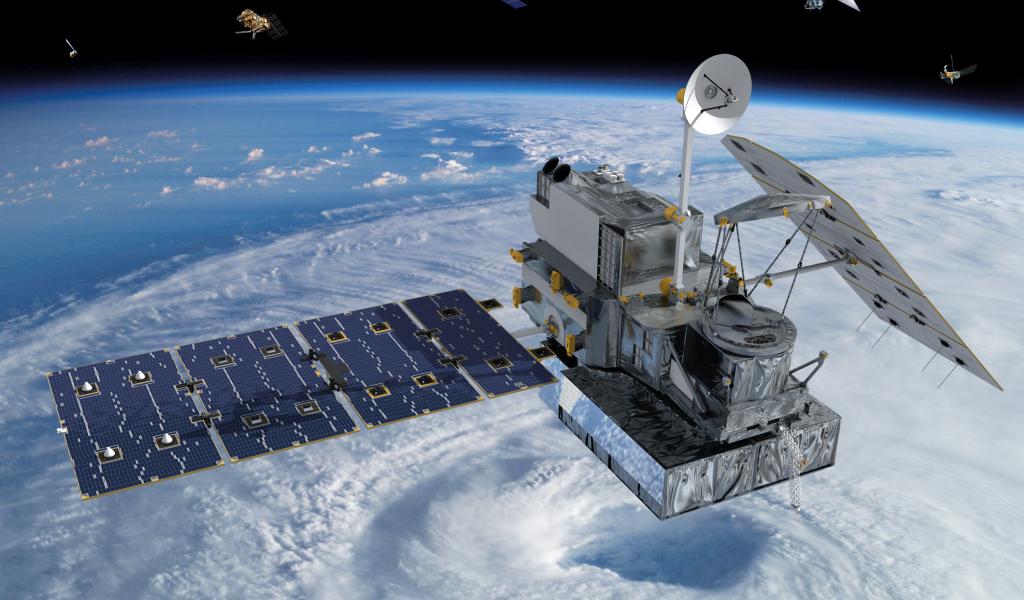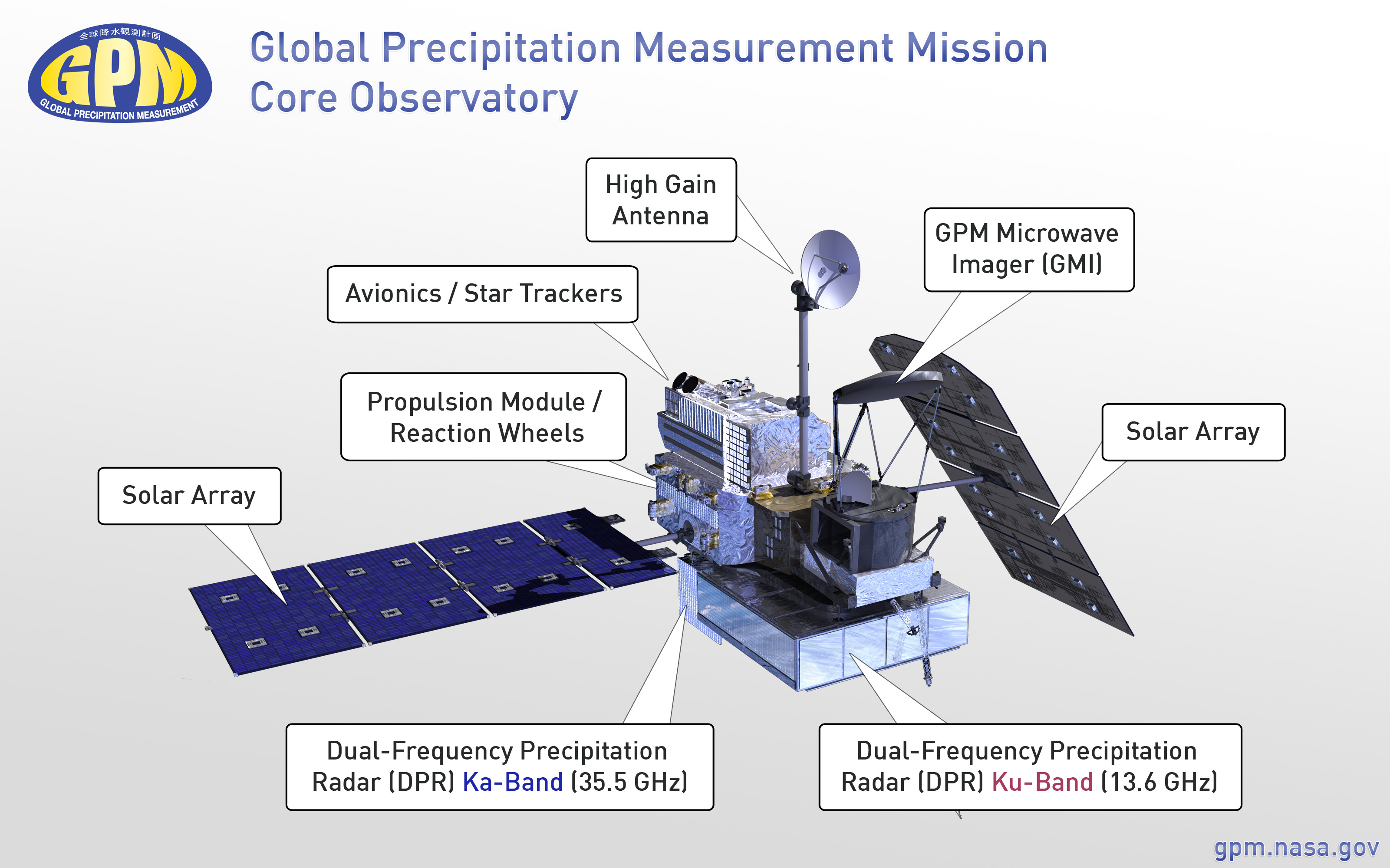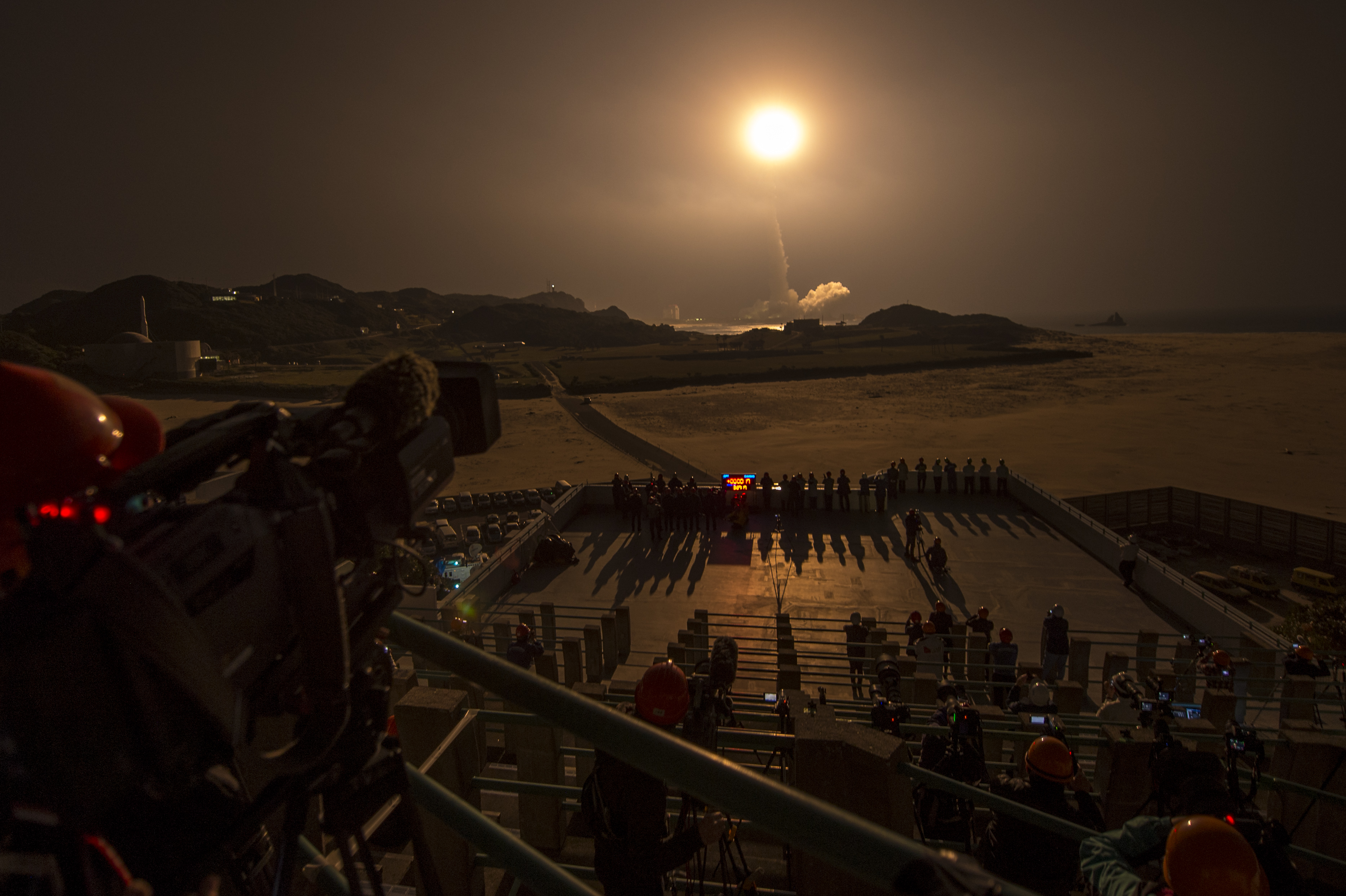
Enhancing our understanding of global weather and climate with precipitation estimates covering much of the planet
Climate change is increasing the frequency and intensity of weather related events such as droughts and typhoons. However, the current global network of operational, on-the-ground rain gauges is extremely limited and provides relatively poor information for predicting extreme rainfall events and larger precipitation patterns.
Innovative technologies reflected in the global scale Tropical Rainfall Measuring Mission (TRMM) and Global Precipitation Measurement (GPM) mission have now demonstrated that reliable precipitation estimates can be obtained over much of the earth’s surface. These previously unavailable data are helping scientists better understand global weather patterns and providing critical near-real-time information for tracking rainfall and anticipating extreme events such as floods and landslides.

This image labels the major components of the GPM Core Observatory, including the GMI, DPR, HGAS, solar panels, and more.
From 1997 to 2015, the Tropical Rainfall Measuring Mission (TRMM) provided detailed estimates of moderate and heavy rainfall in the tropics. A collaborative mission of NASA and the Japan Aerospace Exploration Agency (JAXA), the TRMM mission combined active RADAR, passive radiometer, and other instrumentation to characterize the type, size, density, and distribution of water particles in the atmosphere. When calibrated with ground measurements, these data yielded reliable estimates of precipitation over vast and continuous area of the earth’s tropical and subtropical zones. This information allowed for better forecasting of flood and drought events that in turn improved disaster preparedness and response planning.
Building on the pioneering TRMM mission, the Global Precipitation Measurement (GPM) mission was launched by NASA and JAXA in 2014. Using a similar but improved combination of active RADAR and passive radiometer instruments, the GPM mission is actually made up of numerous satellites with one “Core Observatory” that carries an advanced microwave receiver to interpret and harmonize signals from all other satellites in the constellation. This configuration provides estimates of rain and snowfall at a resolution of 25 km x 25 km extending to the 65° north and south latitudes every three hours. GPM data are now crucial inputs to information services related to weather and flood forecasting, water resource management, and soil moisture and crop conditions.

A Japanese H-IIA rocket with the NASA-Japan Aerospace Exploration Agency (JAXA), Global Precipitation Measurement (GPM) Core Observatory onboard, is seen launching from the Tanegashima Space Center on Friday, Feb. 28, 2014 (Japan Time), in Tanegashima, Japan.
SERVIR-Mekong and GPM
Given the diverse landscape of Southeast Asia, the continuous record of TRMM and GPM and the ongoing near-real-time data streams now provided by the GPM mission offer a powerful opportunity to better manage agricultural production and reduce societies vulnerability to weather-related natural disasters.
SERVIR-Mekong is currently working with partners to leverage the power of TRMM and GPM data in two flagship decision support products. The Virtual Rain and Stream Gauge Data Service provides TRMM and GPM data to users in the form of customized grid datasets representing the periods and areas required by users or as links to near-real-time data feeds that can be embedded in applications designed to better inform water resource management, enable improved flood forecasting, and facilitate more accurate landslide risk assessments.
The Regional Drought Information System, a collaboration of SERVIR-Mekong, a team at NASA’s Jet Propulsion Laboratory, the Mekong River Commission’s Drought Management Team, and other partners uses GPM data as a key input to several indices of drought. The value of such information was underscored by the severe drought conditions experienced by much of the region during the first half of 2016.
Link for additional information:



